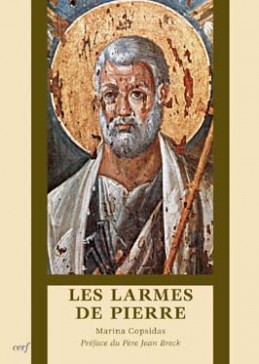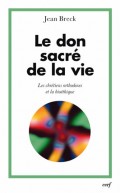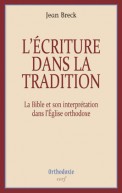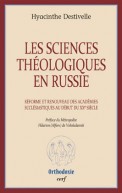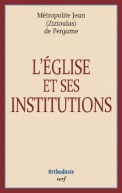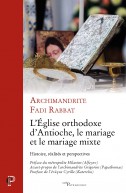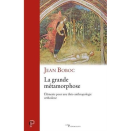Les Larmes de Pierre
Collection Catéchèse Orthodoxe
288 pages - oct. 2012
30,80€
Saint Pierre, le premier des apôtres de Jésus Christ, s'est révélé être la « pierre d'achoppement » du christianisme menant à la séparation des Églises au cours du deuxième millénaire. Mais qui est Pierre ? C'est en partant à la rencontre de Simon-Pierre à travers les Écritures — 235 versets en tout — que l'on redécouvre le plus turbulent et le plus humble des disciples. Mais plus encore, c'est par les larmes amères de son repentir, après ses trois reniements successifs (Mt 26, 69-75), que Pierre se révèle un modèle pour tous les chrétiens, par sa fidélité et son amour pour le Christ (Jn 21, 15-19), par-delà ses faiblesses. Force est de constater que, si l'athéisme totalitaire s'est effondré à la fin du XXe siècle, la déchristianisation de l'Occident n'a fait que progresser. Aussi, on ne doit pas se soustraire à l'examen attentif et critique de l'histoire du christianisme : ce qu'il est et ce qu'il est devenu. À l'aube du troisième millénaire, un demi-siècle après Vatican II, ce pèlerinage sur les traces de Pierre apparaît comme un acte d'œcuménisme et un chemin d'espérance vers l'unité des chrétiens : « Le ferment de l'unité humaine doit être l'unité chrétienne... J'appartiens à toutes les Églises, ou plutôt à une seule Église, l'Église du Christ ressuscité qui nous ressuscite et nous donne la force d'aimer... Nous, chrétiens, nous n'avons rien à demander, rien à imposer, mais nous devons témoigner que la vie a un sens, qu'elle est immense, qu'elle s'en va vers l'éternité » (Patriarche Athénagoras [1969]).
--
Peter, the foremost of Christ’s apostles, proved to be Christianity’s ‘stumbling block’, leading to the separation of the Churches during the second millennium. But who is Peter? It is by studying Simon Peter in the Scriptures - 235 verses in all - that we rediscover the most turbulent and most humble disciple. But even more, it is through his bitter tears of repentance, following his three successive denials (Matthew 26, 69-75), that Peter reveals himself as a model for all Christians, regardless of his shortcomings, because of his fidelity and his love for Christ (John 21, 15-19). Totalitarian atheism collapsed in the late 20th century, but no one can deny that the de-Christianisation of the West has constantly progressed. Hence, we must not shrink from an attentive and critical examination of the history of Christianity: what it is, and what it has become. At the dawn of the third millennium, and half a century after Vatican II, this pilgrimage in the footsteps of Peter appears like an ecumenical act and a path of hope towards Christian unity: ‘The ferment of human unity must be Christian unity... I belong to every Church, or rather to one sole Church, the church of the resurrected Christ who resurrects us and gives us the strength to love… We Christians ask for nothing, impose nothing, but we must show that life has a meaning, that it is immense, that it is heading towards eternity.’ (Patriarch Athenagoras, 1969).
--
Peter, the foremost of Christ’s apostles, proved to be Christianity’s ‘stumbling block’, leading to the separation of the Churches during the second millennium. But who is Peter? It is by studying Simon Peter in the Scriptures - 235 verses in all - that we rediscover the most turbulent and most humble disciple. But even more, it is through his bitter tears of repentance, following his three successive denials (Matthew 26, 69-75), that Peter reveals himself as a model for all Christians, regardless of his shortcomings, because of his fidelity and his love for Christ (John 21, 15-19). Totalitarian atheism collapsed in the late 20th century, but no one can deny that the de-Christianisation of the West has constantly progressed. Hence, we must not shrink from an attentive and critical examination of the history of Christianity: what it is, and what it has become. At the dawn of the third millennium, and half a century after Vatican II, this pilgrimage in the footsteps of Peter appears like an ecumenical act and a path of hope towards Christian unity: ‘The ferment of human unity must be Christian unity... I belong to every Church, or rather to one sole Church, the church of the resurrected Christ who resurrects us and gives us the strength to love… We Christians ask for nothing, impose nothing, but we must show that life has a meaning, that it is immense, that it is heading towards eternity.’ (Patriarch Athenagoras, 1969).
- Dimensions : 160x225x15
- ISBN : 9782204098540
- Poids : 450 grammes
Avec la collaboration de : Jean Breck
DU MÊME AUTEUR
> VOIR TOUS LES LIVRES DE l'AUTEUR

